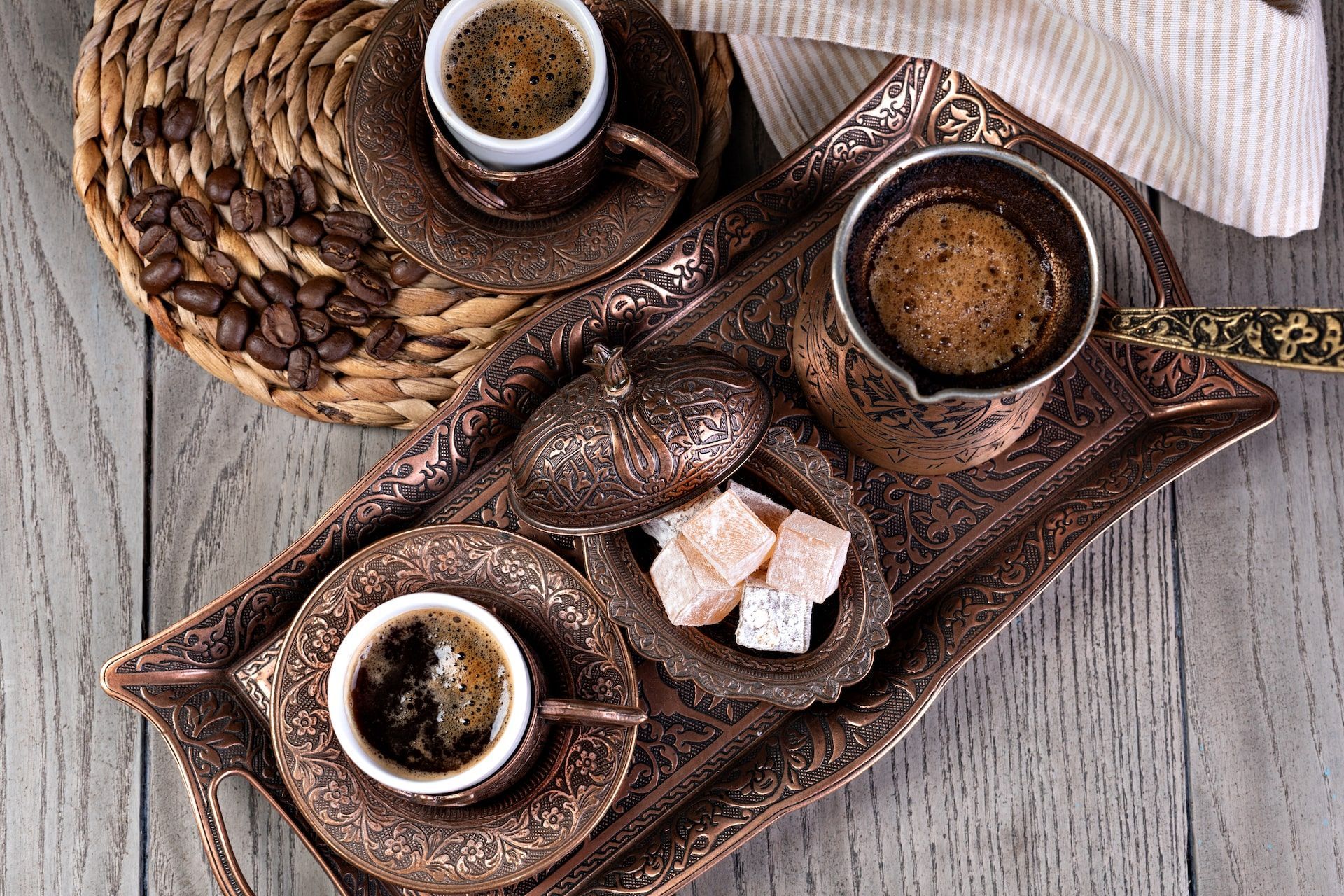Turkey is famous for its rich history and culture, and its coffee culture is no exception. Turkish coffee is a unique and delicious beverage that has been a part of the country’s culture for centuries. In this guide, we’ll explore the history and tradition of Turkish coffee, as well as how to make and enjoy it.
History of Turkish Coffee
Coffee has a long and fascinating history in Turkey. The first coffee shop in the world, Kiva Han, was opened in Istanbul in 1475. Coffee quickly became a popular drink among the upper classes, and coffee houses sprang up throughout the city. In the 16th century, coffee was introduced to Europe by Turkish merchants, and it quickly became a staple of European culture as well.
The traditional method of making Turkish coffee involves roasting and grinding the coffee beans to a very fine powder. The powder is then boiled in a special pot called a cezve with water and sugar (optional), and the resulting drink is served in small cups. The coffee is typically enjoyed with a small glass of water and a piece of Turkish delight.
The Importance of Turkish Coffee in Turkish Culture
Turkish coffee is an important part of Turkish culture and hospitality. It is often served to guests as a sign of welcome and friendship. In fact, there is a Turkish proverb that says “A cup of coffee commits one to forty years of friendship.”
In addition to its social significance, Turkish coffee is also a symbol of Turkish identity and tradition. The process of making and serving the coffee is steeped in ritual and tradition, and it is seen as a way to connect with Turkey’s rich history and cultural heritage.
How to Make Turkish Coffee
To make Turkish coffee, you will need a few special tools: a cezve (Turkish coffee pot), a grinder (preferably a manual grinder), and very finely ground coffee beans. Here is a basic recipe:
- Grind the coffee beans to a very fine powder (similar to the texture of cocoa powder).
- Add one heaping teaspoon of the coffee powder per cup of water into the cezve.
- Add sugar to taste (optional).
- Pour cold water into the cezve, filling it about three-quarters full.
- Place the cezve on the stove over low heat.
- Stir the mixture gently until it begins to foam.
- When the foam rises to the top of the cezve, remove it from the heat.
- Pour the coffee into small cups, including the foam.
- Serve with a glass of water and a piece of Turkish delight.
Where to Experience Turkish Coffee Culture
You can experience Turkish coffee culture in many places throughout Turkey, from traditional coffee houses to modern cafes. Some of the best places to enjoy Turkish coffee include Istanbul’s historic coffee houses, the Grand Bazaar, and the Spice Bazaar. Many restaurants and cafes also serve Turkish coffee, and it is often included as part of a traditional Turkish breakfast.
In conclusion, Turkish coffee is not just a beverage, it is a cultural tradition that has been passed down through generations. From its rich history to its importance in Turkish hospitality, Turkish coffee is a symbol of Turkish culture and identity. So, the next time you visit Turkey, make sure to experience the culture and tradition of Turkish coffee for yourself.




